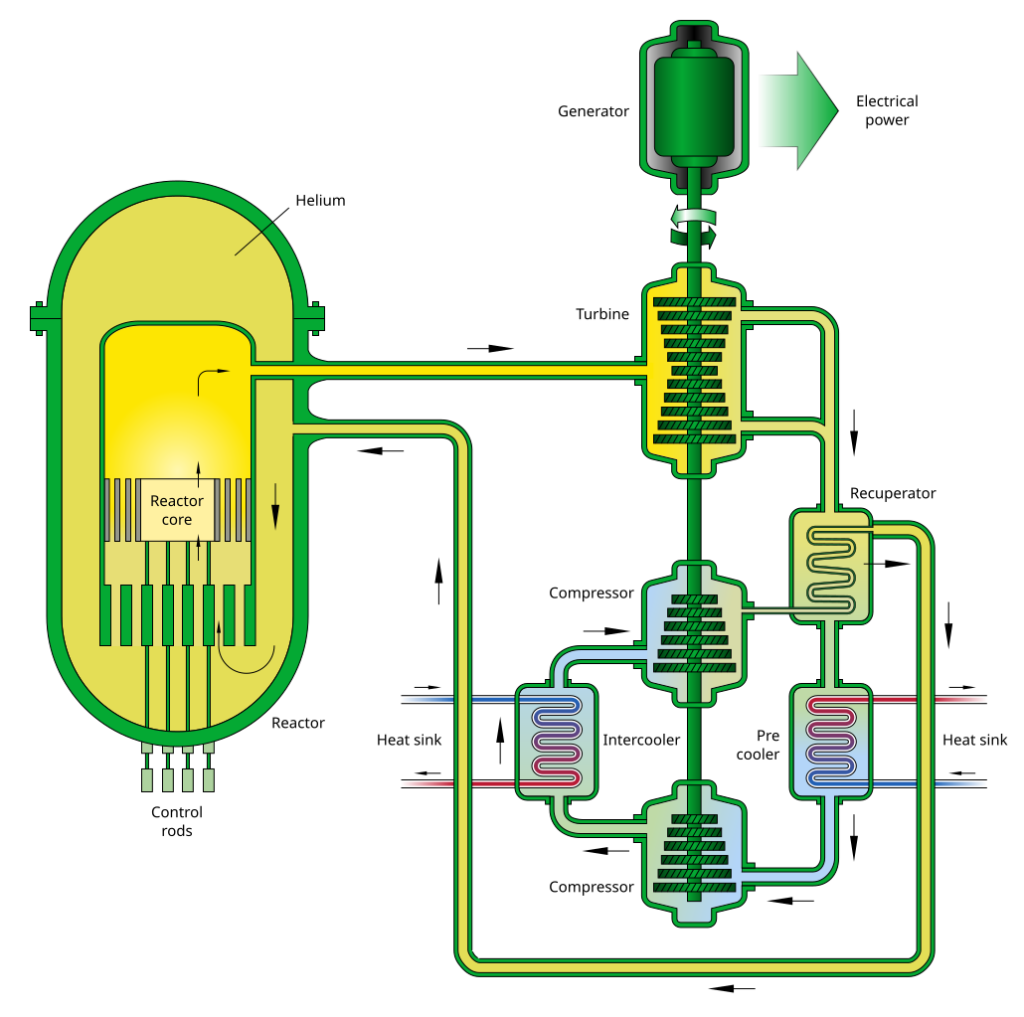Table of Contents
What is a Gas-cooled Fast Reactor?
As a Generation IV design, a Gas-cooled Fast Reactor (GFR) represents an innovation in nuclear reactor design. The design is capable of serving multiple purposes, including power generation and co-production of hydrogen, at the same time as breeding new nuclear fuel by converting fertile isotopes into fissile isotopes via neutron absorption – hence being referred to as a fast breeder reactor.
Fast Neutrons
A gas-cooled fast reactor (GFR) uses the fast neutron spectrum – neutrons with an average energy in excess of 1 MeV. Therefore, no moderator is required.
Gas Coolant
With a gas-cooled fast reactor operating at high temperatures (often up to 850 °C), the most common choice of coolant is helium gas (though carbon dioxide and steam can also be used).
Fertile Fuel
The use of the fast neutron spectrum allows use of fertile fuels, such as thorium-232 , uranium-234 or uranium-238 which can each adsorb a fast neutron and convert into the fissile isotopes uranium-233, uranium-235 and plutonium-239.
Overcoming challenges in fuel performance is a key focus in gas-cooled fast reactor design and development.

Development of Gas-cooled Fast Reactor Technology
History of the Gas-cooled Fast Reactor
The concept of a Gas-cooled Fast Reactor (GFR) dates back to the 1970s, with General Atomics leading design efforts. The initial research and development need stemmed from a need to develop breeder reactor technology at a time when uranium-235 was in short supply.
To date, no gas-cooled fast reactor has been brought to criticality. However, there has been operation of gas-cooled reactor designs that are not faster breeder reactors but instead use the thermal neutron spectrum; these include the Magnox Reactor, the Advanced Gas-cooled Reactor (AGR) and the High Temperature Gas-cooled Reactor (HTGR).
What is happening today?
A GFR design by General Atomics uses lower-temperature helium and supercritical carbon dioxide for power generation, addressing challenges associated with extremely high temperatures. Collaborations with partners introduce innovative reactor designs like the Energy Multiplier Module (EM2) and the 50 MWe Fast Modular Reactor (FMR).
Research priorities focus on improving fuels, materials and thermal hydraulics to advance GFR development, contributing to more efficient and sustainable nuclear energy technologies.
Explore Further
Choose from the articles below to continue learning about nuclear.
Lead-cooled Fast Reactor (LFR) – from Metal to Megawatts
Supercritical Water Reactor (SCWR) – Steam, Speed and Sustainability
Sodium-cooled Fast Reactor (SFR) – a Fast Future for Fission?
Advanced Modular Reactor (AMR) – The Future of Nuclear Energy Explained
Did you know? Explore Nuclear also offers great careers information and learning resources.
Below you can find references to the information and images used on this page.
